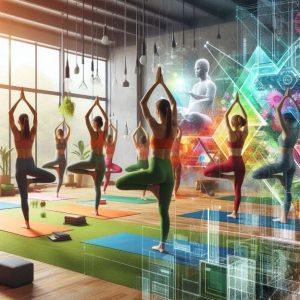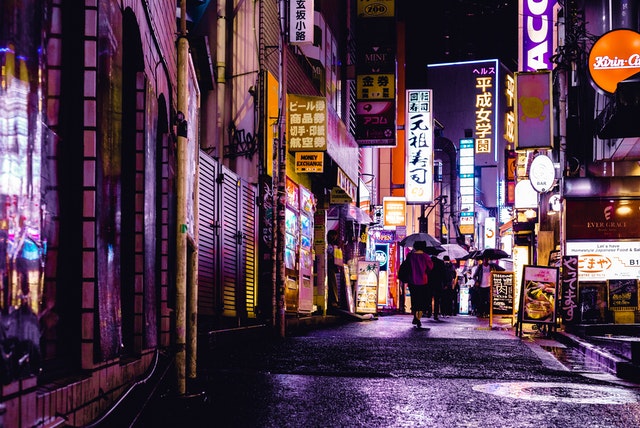 Many religious buildings welcome large groups every week, which makes comfort and reliability essential for worship and community events. Churches, temples, mosques, and other sacred spaces rely on strong HVAC and plumbing systems to keep their gatherings peaceful, safe, and welcoming. These systems quietly work behind the scenes, shaping how people experience the space around them.
Many religious buildings welcome large groups every week, which makes comfort and reliability essential for worship and community events. Churches, temples, mosques, and other sacred spaces rely on strong HVAC and plumbing systems to keep their gatherings peaceful, safe, and welcoming. These systems quietly work behind the scenes, shaping how people experience the space around them.
Good planning becomes even more important when a building serves many purposes, from worship services to shared meals and rituals. This is also why many congregations consider updates or services such as heating repair when exploring long term improvements. The right upgrades help reduce costs, protect historic structures, and create a healthier environment for all.
Choosing Quiet and Efficient HVAC for Worship Halls
Worship halls need quiet systems so people can focus on prayer, music, and reflection. Loud fans or rattling ducts distract people and interrupt moments that should feel still. Many faith communities now look at high efficiency, low noise HVAC units designed for large rooms. These systems control temperature without creating background noise that competes with sermons, instruments, or spoken prayer.
- Quiet variable speed air handlers
- Energy efficient heat pumps and furnaces
- Zoning options that avoid over cooling or over heating
As buildings continue to expand their programs, a good HVAC layout also helps them save on monthly utility bills.
Climate Control for Sanctuaries and Fellowship Halls
Different areas inside a religious building often have very different needs. The sanctuary may require steady temperatures for large weekend services. Fellowship halls may host meals, youth programs, or community gatherings that raise indoor heat quickly. Smart zoning lets teams adjust each area separately. This gives volunteers better control during events while keeping people comfortable no matter how many attend.
Some congregations also install smart thermostats. These tools offer scheduling features that reduce energy waste during quiet weekdays.
Reliable Hot Water and Plumbing for Kitchens and Baptisteries
Many churches and temples run large kitchens that serve meals after services or during outreach programs. Running out of hot water during busy events can create problems for dishwashing, food prep, and sanitation. Baptisteries and ritual washing stations also rely on steady plumbing that remains safe and clean.
- Tankless water heaters for steady hot water flow
- Updated piping to prevent leaks
- Strong water pressure for cleaning and ritual areas
Safe and durable plumbing helps staff and volunteers focus on care and hospitality rather than equipment issues.
Ventilation for Health During Gatherings
Healthy air circulation is essential when many people gather in one room for long periods. Better ventilation systems lower the risk of airborne illnesses and keep the indoor environment fresh. Mechanical ventilation, upgraded filters, and energy recovery ventilators support consistent air exchange during busy worship hours.
One facility manager shared, “Fresh air matters more than people realize. It shapes how comfortable the entire service feels.”
Grants and Funding Opportunities for Faith Communities
Many religious groups worry about the cost of renovations, but a variety of grants and nonprofit funding programs can help. Some energy companies offer rebates for high efficiency HVAC upgrades. Religious organizations can also explore grants aimed at improving community centers and reducing energy use.
Taking advantage of funding helps buildings invest in better systems without straining their budgets.
Maintaining Historic Buildings While Updating Systems
Many faith based buildings are historic landmarks that require careful planning during updates. These structures often have stone walls, tall ceilings, or older designs that make HVAC upgrades challenging. Modern systems can be installed in a way that preserves architectural beauty while still improving efficiency, and resources like this guide on cast iron radiators in sacred spaces can help leaders see how traditional heating methods still play an important role.
Working with specialists who understand historic preservation helps protect sacred spaces for future generations. This approach keeps the building’s character intact while improving comfort for those who visit.
Case Study Ideas for Congregations in Frederick and Nearby Areas
Local examples help illustrate how upgrades make a real difference. A small congregation in Frederick might improve heating and cooling in its fellowship hall with a zoned system. A larger temple could install high capacity ventilation to support community events. Another church may seek services like heating repair during winter months to keep its sanctuary warm and welcoming.
These real world cases highlight how thoughtful investments can uplift community experiences.
Conclusion
Faith based spaces thrive when the environment feels comfortable, safe, and welcoming. Smart HVAC and plumbing upgrades help leaders care for their congregations, protect historic buildings, and manage long term costs. When issues arise, support services such as heating repair remain essential for keeping worship spaces running smoothly. With the right planning, every religious community can create a space where people feel connected and at peace.





 Yoga began over 5,000 years ago in ancient India as a spiritual practice rooted in Hinduism and later Buddhism. Designed to unite body, mind, and spirit, it was a disciplined path for monks and ascetics seeking enlightenment. Ancient texts like the Rigveda and Upanishads laid the groundwork, emphasizing meditation, breath control, and ethical living. Practitioners sat in quiet contemplation, far from today’s bustling studios. Their focus was inward, aiming for liberation from worldly suffering. This sacred tradition, passed down through generations, was less about physical postures and more about mental clarity and spiritual awakening.
Yoga began over 5,000 years ago in ancient India as a spiritual practice rooted in Hinduism and later Buddhism. Designed to unite body, mind, and spirit, it was a disciplined path for monks and ascetics seeking enlightenment. Ancient texts like the Rigveda and Upanishads laid the groundwork, emphasizing meditation, breath control, and ethical living. Practitioners sat in quiet contemplation, far from today’s bustling studios. Their focus was inward, aiming for liberation from worldly suffering. This sacred tradition, passed down through generations, was less about physical postures and more about mental clarity and spiritual awakening. Millions of people now access religious teachings and services online every week. From livestreamed Sunday sermons to digital scripture study tools, the internet has become an extension of worship spaces. Faith communities are realizing that a well-organized online hub can make a big difference in keeping members engaged, informed, and spiritually connected.
Millions of people now access religious teachings and services online every week. From livestreamed Sunday sermons to digital scripture study tools, the internet has become an extension of worship spaces. Faith communities are realizing that a well-organized online hub can make a big difference in keeping members engaged, informed, and spiritually connected. Churches have traditionally been centers for worship, community, and connection. From weekly services to seasonal events, these gatherings often extend beyond sanctuary walls. In recent years, many churches have begun reimagining their outdoor spaces to accommodate the growing need for flexible, comfortable, and welcoming environments.
Churches have traditionally been centers for worship, community, and connection. From weekly services to seasonal events, these gatherings often extend beyond sanctuary walls. In recent years, many churches have begun reimagining their outdoor spaces to accommodate the growing need for flexible, comfortable, and welcoming environments. Every home holds a sanctuary. Whether it’s a quiet corner for prayer, a cushioned nook for meditation, or a family room where loved ones gather for reflection, these spaces carry deep meaning. Cleanliness in these areas isn’t just about appearance. It’s about creating an environment that feels pure and welcoming. Upholstered furniture, like sofas or armchairs, often anchors these sacred spots. Keeping them spotless enhances the spiritual experience, fostering peace and clarity.
Every home holds a sanctuary. Whether it’s a quiet corner for prayer, a cushioned nook for meditation, or a family room where loved ones gather for reflection, these spaces carry deep meaning. Cleanliness in these areas isn’t just about appearance. It’s about creating an environment that feels pure and welcoming. Upholstered furniture, like sofas or armchairs, often anchors these sacred spots. Keeping them spotless enhances the spiritual experience, fostering peace and clarity.
 Meet Olen Thompson, founder of the Truckers Ministries, which he chaplains by providing counselling and fellowship for truck drivers and transients; or to anyone who enters the semitrailer that he converted into a chapel. Being a former heavy duty towing truck driver who hauled heavy equipment across the US, Olen is able to relate to the challenges and hardships of being on the road for months.
Meet Olen Thompson, founder of the Truckers Ministries, which he chaplains by providing counselling and fellowship for truck drivers and transients; or to anyone who enters the semitrailer that he converted into a chapel. Being a former heavy duty towing truck driver who hauled heavy equipment across the US, Olen is able to relate to the challenges and hardships of being on the road for months. Now a Free Methodist elder, he and other members of the Truckers Ministries act as chaplains. They provide help whatever and whenever needed by people seeking to get closer to Christ in order to be led out of deeper waters. Trucker Ministries operate mainly on donations given by employees of trucking companies.
Now a Free Methodist elder, he and other members of the Truckers Ministries act as chaplains. They provide help whatever and whenever needed by people seeking to get closer to Christ in order to be led out of deeper waters. Trucker Ministries operate mainly on donations given by employees of trucking companies.

 When going on a road trip, it is important that you plan ahead of time and prepare all necessary things you need for the trip. Travel pillows and blankets, a first aid kit, chargers, extra batteries, headlamps and/or flashlights, your driver’s license, car registration as well as insurance Information, spare tire, and keys are among the things you need to prepare. While these are all important, it is also imperative that your car is regularly checked, serviced, and maintained even before you have planned the road trip to ensure your vehicle is in excellent condition and in optimal performance when you head out.
When going on a road trip, it is important that you plan ahead of time and prepare all necessary things you need for the trip. Travel pillows and blankets, a first aid kit, chargers, extra batteries, headlamps and/or flashlights, your driver’s license, car registration as well as insurance Information, spare tire, and keys are among the things you need to prepare. While these are all important, it is also imperative that your car is regularly checked, serviced, and maintained even before you have planned the road trip to ensure your vehicle is in excellent condition and in optimal performance when you head out. Begin Your Travel With A Prayer
Begin Your Travel With A Prayer So you cannot afford not to celebrate your diversity and should learn how you can still live together.
So you cannot afford not to celebrate your diversity and should learn how you can still live together. Religion has long inspired the creation of beautiful and meaningful objects. From ancient relics to modern interpretations, many works of art are shaped by spiritual beliefs. One such modern material that is beginning to find a place in religious spaces and expressions is HaanGlas VIG. This unique glass-like medium combines beauty, durability, and symbolism, making it a fitting choice for environments where faith is central.
Religion has long inspired the creation of beautiful and meaningful objects. From ancient relics to modern interpretations, many works of art are shaped by spiritual beliefs. One such modern material that is beginning to find a place in religious spaces and expressions is HaanGlas VIG. This unique glass-like medium combines beauty, durability, and symbolism, making it a fitting choice for environments where faith is central.
 Moving a church is no small task. It’s about packing pews and furniture and relocating
Moving a church is no small task. It’s about packing pews and furniture and relocating 



 Thai massage is the most requested home tie (홈타이) service from Korean providers of home massage treatments rendered by a Thai Manager and a blind Thai masseuse. While this type of service is hard to come by just by searching for a home service massage, those in the know, use an intermediary
Thai massage is the most requested home tie (홈타이) service from Korean providers of home massage treatments rendered by a Thai Manager and a blind Thai masseuse. While this type of service is hard to come by just by searching for a home service massage, those in the know, use an intermediary  Actually, Thai massage is of Indian origin, as it was developed 2500 years ago by Buddha’s Indian doctor and friend. As Buddhism flourished and spread in various South-East Asian monasteries, it gained popularity in Thailand as a massage service rendered outside of Buddhist monasteries.
Actually, Thai massage is of Indian origin, as it was developed 2500 years ago by Buddha’s Indian doctor and friend. As Buddhism flourished and spread in various South-East Asian monasteries, it gained popularity in Thailand as a massage service rendered outside of Buddhist monasteries.




 Social media is essential to connect and engage with audiences of all kinds. Churches can leverage the power of social media to reach a wider community, share their message, and foster meaningful connections. This article will explore
Social media is essential to connect and engage with audiences of all kinds. Churches can leverage the power of social media to reach a wider community, share their message, and foster meaningful connections. This article will explore  As a matter of fact, the administration of AU Prime Minister Scott Morrison recognized the need of different religious
As a matter of fact, the administration of AU Prime Minister Scott Morrison recognized the need of different religious  either to a Network Video Recorder (NVR) that stores the recorded footage; or to a server-based Video Management System (VMS).
either to a Network Video Recorder (NVR) that stores the recorded footage; or to a server-based Video Management System (VMS).
 Religion is a crucial part of many people’s lives, and in today’s digital age, religious organizations need to have a strong online presence. A well-designed website by website design Hamilton can serve as a platform for communicating with members, reaching out to potential followers, and offering valuable resources. Here are some tips and best practices for designing religious websites that are user-friendly, accessible, and engaging.
Religion is a crucial part of many people’s lives, and in today’s digital age, religious organizations need to have a strong online presence. A well-designed website by website design Hamilton can serve as a platform for communicating with members, reaching out to potential followers, and offering valuable resources. Here are some tips and best practices for designing religious websites that are user-friendly, accessible, and engaging. In today’s world, where technology significantly impacts our daily lives, social media platforms like Instagram have become an essential tool for communication, entertainment, and self-expression. However, Instagram is not only used for these purposes but also for religious expression and practices.
In today’s world, where technology significantly impacts our daily lives, social media platforms like Instagram have become an essential tool for communication, entertainment, and self-expression. However, Instagram is not only used for these purposes but also for religious expression and practices.




 If your food manufacturing company is planning to implement a digital strategy, acknowledging the need for a digital system is a significant first step. The road toward digital transformation is long and complicated. But don’t worry, there are marketing professionals who can guide you, click on manufacturing search marketing.
If your food manufacturing company is planning to implement a digital strategy, acknowledging the need for a digital system is a significant first step. The road toward digital transformation is long and complicated. But don’t worry, there are marketing professionals who can guide you, click on manufacturing search marketing.